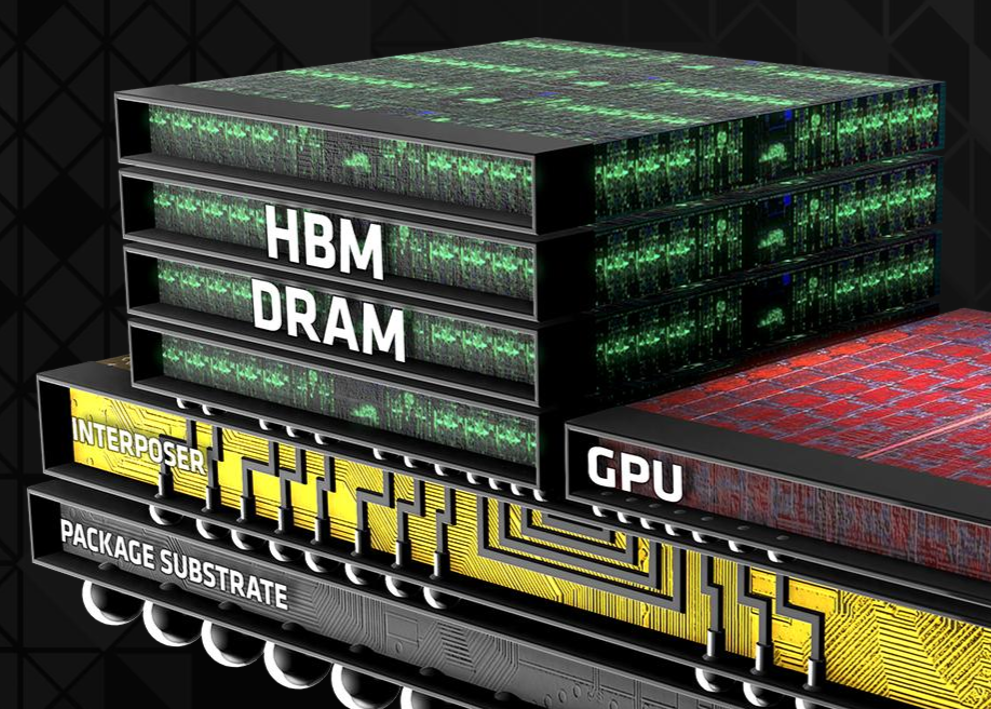Samsung to adopt hybrid bonding for HBM4 memory
As SK hynix considers hybrid bonding a backup plan.

Samsung plans to adopt hybrid bonding technology for its HBM4 to reduce thermals and enable an ultra-wide memory interface, the company revealed at the AI Semiconductor Forum held in Seoul, South Korea. By contrast, the company's rival SK hynix might delay adoption of hybrid bonding technology, reports EBN.
High-bandwidth memory (HBM) stack multiple memory devices on top of a base die. For now, memory dies in HBM stacks are typically joined together using microbumps (that carry data, power, and control signals between stacked dies) and bonding is performed using techniques like mass reflow with molded underfill (MR-MUF) or thermal compression using a non-conductive film (TC-NCF).
These dies are also interconnected vertically using through-silicon vias (TSVs) embedded within each die (that carry data, clock, control signals, power, and ground through each DRAM die). However, as HBM gets faster and gains the number of DRAM devices, microbumps become inefficient as they limit performance and power efficiency.
This is where hybrid bonding comes into play. Hybrid bonding is a 3D integration technique that directly connects dies by bonding copper-to-copper and oxide-to-oxide surfaces, eliminating the need for microbumps. Hybrid bonding supports interconnect pitches below 10 µm, offering lower resistance and capacitance, higher density, better thermal performance compared to traditional bump-based stacking, and thinner 3D stacks.
However, there is a problem. Hybrid bonding is a rather expensive technique and while all three leading makers of HBM memory considered it for 12-Hi HBM3E, Micron and Samsung ended up using TC-NCF, while SK hynix uses MR-MUF. With HBM4, Samsung plans to use hybrid bonding, whereas SK hynix is developing an advanced MR-MUF technique as well as hybrid bonding as a backup process.
There is a reason why SK hynix may use traditional molded underfill instead of hybrid bonding. The specialized equipment needed for hybrid bonding is significantly more expensive than conventional packaging tools and requires substantially more physical space in fabs.
This impacts capital efficiency, particularly when fab floor area is limited. As a result, SK hynix is proceeding cautiously. If it finds out that its advanced MR-MUF technique provides the same (or similar) performance results and good yields, it will rather stick with MR-MUF for at least one more generation.
Another reason why SK hynix may stick to MR-MUF for one more generation is that its advanced MR-MUF enables thinner HBM memory stacks than previous-generation underfills. This allows the company to produce 16-Hi HBM4 stacks that are compliant with with JEDEC's HBM4 specifications that mandate maximum package height of an HBM4 package at 775 µm, which is a bit shorter compared to ~800 µm maximum height of 16-Hi HBM3E stacks. If SK hynix can meet JEDEC's specifications with existing tools and technologies, it makes usage of hybrid bonding considerably less attractive for the company.
Samsung has its own maker of fab tools, Semes, which somewhat reduces its fab costs. However, it is unclear whether Semes can produce advanced hybrid bonding tools for its parent company for now.
Nonetheless, hybrid bonding is a technology that will be used in the future anyway, so the industry is watching whether Samsung can qualify its HBM4 using hybrid bonding. Successful qualification could reshape the competitive landscape, giving Samsung a technological and commercial edge in performance, thermal characteristics, and signal density. As a result, Samsung may regain market share from Micron and SK hynix with its HBM4 after it initiates its mass production in 2026.
Follow Tom's Hardware on Google News to get our up-to-date news, analysis, and reviews in your feeds. Make sure to click the Follow button.

Anton Shilov is a contributing writer at Tom’s Hardware. Over the past couple of decades, he has covered everything from CPUs and GPUs to supercomputers and from modern process technologies and latest fab tools to high-tech industry trends.
-
nitrium So when is HBM coming back to consumer grade GPUs? AMD flirted with it once with their Vega GPUs (but went back to GDDR), while nVidia has never even tried it.Reply
